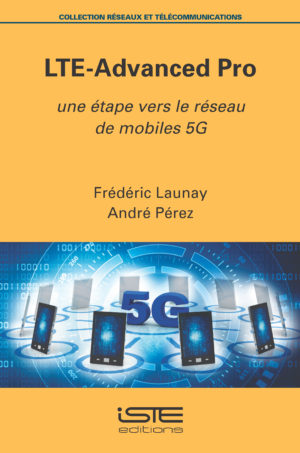
The 4G mobile network is in constant deployment with its main objective being an increase in the rate over the radio interface with mobiles and in cell capacity. This book presents a summary of the specifications relating to LTE (Long Term Evolution) and LTE Advanced radio interfaces, the protocols, the physical signals and channels, and […]
The 4G mobile network is in constant deployment with its main objective being an increase in the rate over the radio interface with mobiles and in cell capacity.
This book presents a summary of the specifications relating to LTE (Long Term Evolution) and LTE Advanced radio interfaces, the protocols, the physical signals and channels, and the procedures.
The LTE radio interface was introduced in Release 8 of the specifications by the 3GPP (3rd Generation Partnership Project) standardization body. It makes it possible to obtain a maximum rate of 300 Mbps for downloads and 75 Mbps for uploads. The LTE Advanced radio interface from Release 10 plans for the future, a maximum rate of 3 Gbps for downloads and 1.5 Gbps for uploads.
1. General Characteristics.
2. NAS Protocol.
3. RRC Protocol.
4. Data Link Layer.
5. Physical Layer.
6. Downlink Physical Signals.
7. Downlink Physical Channels.
8. Uplink Physical Signals.
9. Uplink Physical Channels.
10. Radio Interface Procedures.





